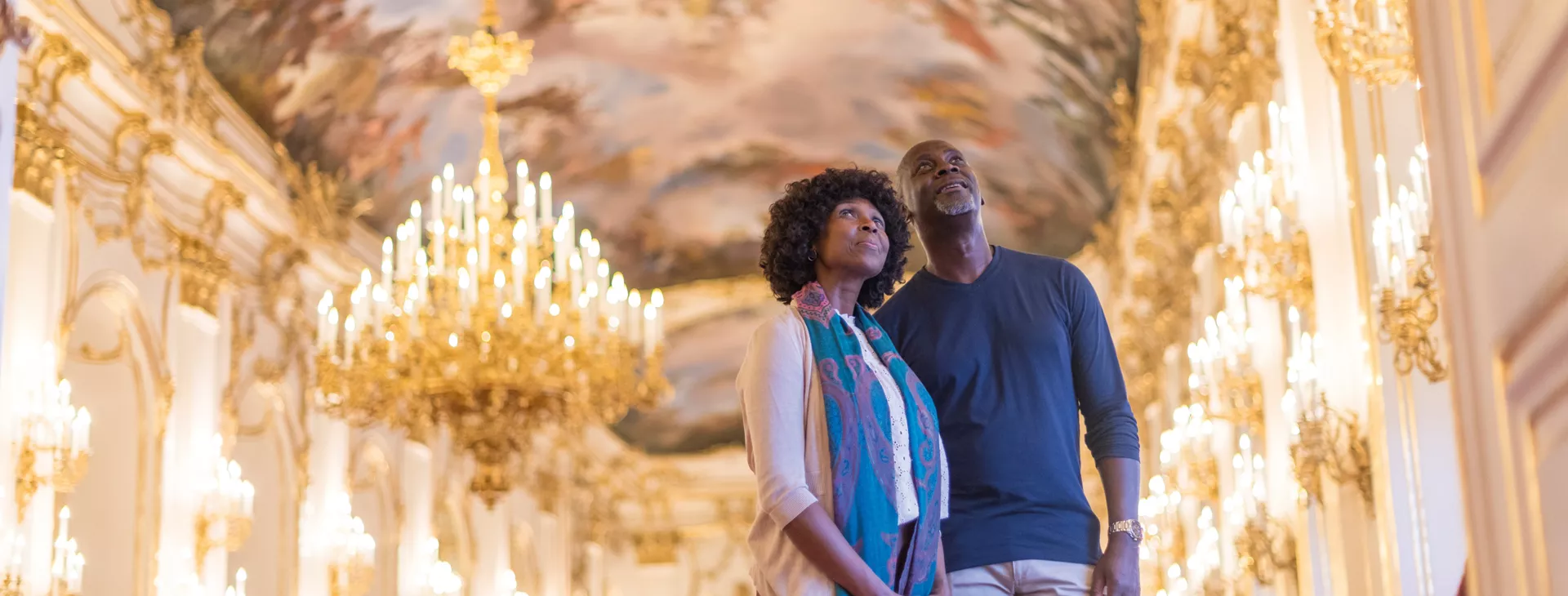
United States
© Luxury Gold 2024. All Rights Reserved.
Experience Slovakia like never before with our small group tours and dedicated Travel Concierge.
13 DAYS
Take a journey into the past, with our show case of the grandest and most opulent cities of old Europe. From Prague to Budapest, marvel at the spirit of former empires and regal grandeur.
One site that is well worth exploring while in the capital is the majestic, 9th century Bratislava Castle. Overlooking the River Danube, this epic structure was once a defence fortification but is now home to the Museum of History, exhibiting sculptures, paintings, and art. Complete with a Baroque garden, the ‘Yard of Honor’ with two spectacular gates, and impressive views of Slovakia, Austria, and even as far as Hungary from the castle towers, this is understandably one of the most popular Slovakian landmarks. In the surrounding Old Town, the Maximillian Fountain (also known as Roland’s Fountain) can be found. Built in the 16th century, this statue is shrouded in legendary tales of the stone knight coming to life as the clock strikes midnight for New Year and during Good Friday. However, it is thought that the only people who can see this ‘miracle’ unfold are those who are native locals to the area, who have been of pure heart and actions for the entirety of their life.
Journeying on from Bratislava, the small villages of the Tatra Mountains are another place to include on the sightseeing list. Characterized by austere wooden churches and traditional folk houses, the Tatra mountain range borders Slovakia and Poland and is a protected area, with National Park status on both sides. Idyllic, enchanting views are a given here. Often described as one of the country’s most beautiful castles, Oravský Hrad Castle is another captivating sight to behold, even from afar. This National Cultural Heritage Monument is built atop a steep cliff-face and was first referred to in historical documents in the 1200s.
What is deemed as a ‘traditional’ Slovakian dish varies from region to region but many incorporate potatoes, pork, milk, cheese or butter. Savory cuisine that you are most likely to find includes: ‘bryndzové halušky’ consisting of dumplings, sausage slices, pieces of bacon and sheep’s cheese; ‘vyprážaný syr’ - a large piece of breaded, fried cheese with a side of potato fries, tartar sauce and vegetables; ‘zemiakové placky’ – a grated potato pancake, coated in flour and egg to make it crispy as it is fries; and schnitzel (a tenderized meat that is breaded and fried). Mains are generally filling and hearty, as are Slovakian desserts, with the latter often being pastry-based. Dobosh cookies are made from a honey and pastry dough, filled with cream and covered with chocolate. Plum pie, apple cake, sweet poppy seed rolls, ‘dolki’ (crumpets), gingerbread hearts, pancakes, jam-filled pasta, and ‘koláče’ (sweet leavened bread topped with jam, walnuts or poppy seeds, and powdered sugar) are among Slovakia’s sweet treats.
Owing to Slovakia’s wealth of over 1,300 mineral water springs, both still and sparkling mineral water is popular to drink. Slovakian’s also enjoy their coffee and the coffee house culture that comes with it, where sharing this drink while conversing with friends is viewed as an event. Other favorite soft drinks include ‘Kofola’ (Slovakia’s answer to Coca Cola), and ‘Vinea’ (made from grape juice). When it comes to alcoholic beverages, bottled and draught beers are brewed and enjoyed throughout the regions, again resulting in many varieties being available. Zlaty Bazant, Corgan and Saris are among the top favorites. Wine is also produced here, in the six wine regions in the south of the country. The Tojak area is best known internationally, while the remaining five regions are generally only known in Slovakia and its neighboring countries. Aside from wine, other alcoholic beverages include the juniper-berry gin ‘Borovicka’ and the plum brandy ‘Slivovica’.
Slovakia boasts 9 National Parks and 14 Protected Landscapes, covering everything from mountain ranges to the lowlands of the Danube River plain, and Europe’s only cold water geyser. At the Geyser of Herľany, located in Kosice, eruptions of ground water occur within every 32-hour period, where water shoots vertically into the air to a height of 15 metres. Deep in Slovakia’s forests, bears, wolves, lynxes, deer, wild boars and squirrels reside. The sub alpine regions are a perfect dwelling place for lizards, amphibians and newts, together with small mammals such as voles. Slovakia’s aquatic life thrives in the rivers and marshlands, and includes catfish, crayfish, trout, turtles and toads. Bird species are equally diverse, with herons, ducks, wagtails, kingfishers, swans and gulls being just some of many varieties. Such diversity in the fauna and flora makes Slovakia a great country for wildlife-lovers and photography enthusiasts alike.
On Luxury Gold tours, your Travel Concierge is fluent in the local language and culture. Before you go, here is more information about Slovakia.
SPRING
MAR-MAY
avg. temp:
11˚C / 52˚F
SUMMER
JUN-AUG
avg. temp:
21˚C / 70˚F
AUTUMN
SEP-NOV
avg. temp:
16˚C / 61˚F
WINTER
DEC-FEB
avg. temp:
1˚C / 34˚F
